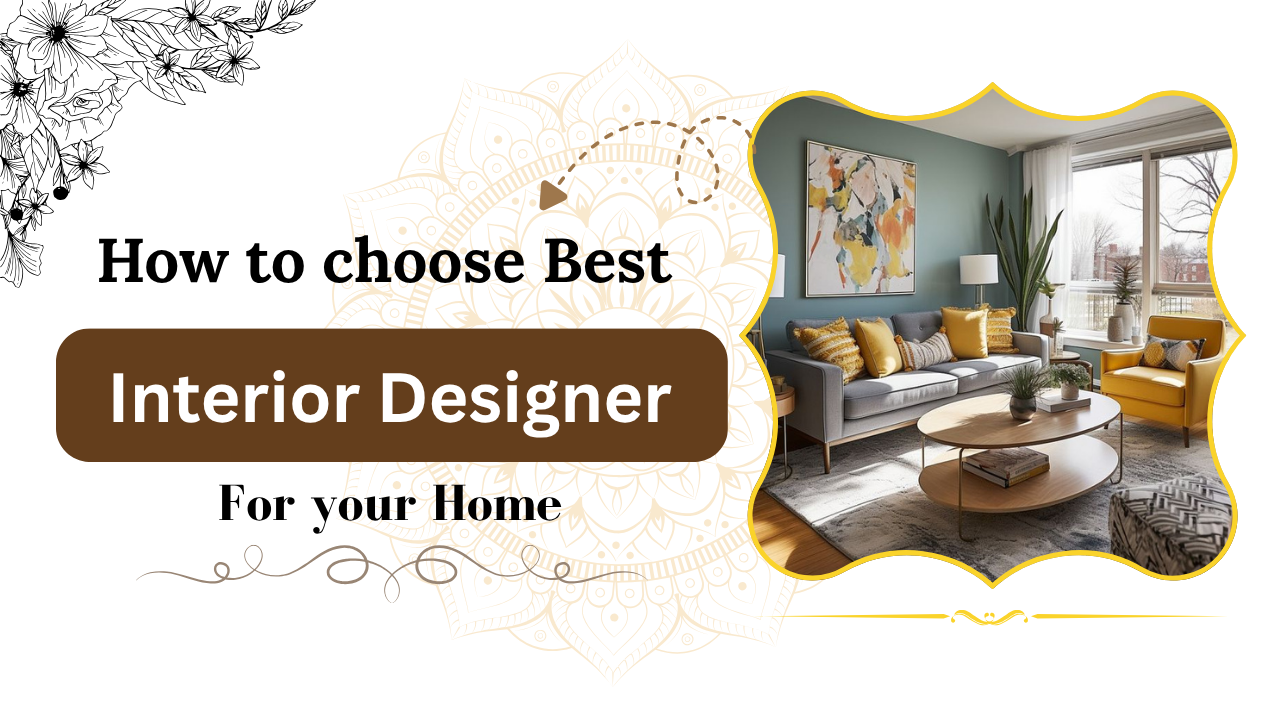
🏠 Choosing the Right Interior Designer for Your Home: A Step‑by‑Step Guide
Your home is more than just a structure—it’s a reflection of your personality, lifestyle, and aspirations. If you’re planning a renovation, refresh, or complete redesign, partnering with the right interior designer can make all the difference. But how do you find someone who truly “gets” you and your vision?
In this comprehensive guide, we’ll walk through everything from clarifying your needs to signing a contract—so you can choose an interior designer with confidence and creativity.
1. Define Your Vision, Scope & Budget
Before you start interviewing designers, get crystal clear on:
✨ Your Style & Goals
Gather inspiration—think Pinterest, Houzz, design magazines, or model homes. Save imagery that appeals to you and show it to potential designers to assess creative alignment
📋 Project Scope
Are you planning a paint refresh, furniture upgrade, major renovation, or structural changes? The scope determines the level of expertise required (decorator vs. full-service designer) .
💰 Budget Range
Set a budget early—interior design can cost 10–45% of total project value, depending on scale, Determine what you’re willing to invest and whether you prefer flat-fee, hourly rates, or percentage-based pricing.
2. Build a Shortlist: Referrals, Searches & Credentials.
How to start finding candidates:
🔗 Ask Trusted Sources
Don’t overlook friends, family, real estate agents, or local suppliers—word-of-mouth remains a top source for quality leads.
🌐 Explore Online Platforms
Websites like Spl Studios, Instagram, and directorates offer extensive portfolios and client reviews. For example, searching “interior design Varanasi” on Instagram can reveal local talent.
📄 Check Professional Affiliations
Credentials such as ASID (US) or SBID (UK) membership, or NCIDQ/CIDQ certification, indicate formal training and standards .
📂 Review Portfolios
Look for projects that resonate with your style and scope—apartments, villas, budgets similar to yours—so you know they can deliver what you want .
3. Spot Red Flags & Prioritize Fit
Even experienced designers can be poor matches without proper vetting:
🚩 Watch for Warnings
Be wary of those lacking portfolios, unclear backgrounds, dismissive of your items, or with whom you don’t feel chemistry .
🤝 Chemistry Matters
You’re building a relationship. As Ariel Okin from Home polish notes, trust and comfort are key—a good designer-client fit is like a strong partnership.
⚙️ Experience &. Specialization
Every project differs—some need technical design, others aesthetic finesse. Choose a designer whose skill set matches your needs .
4. Conduct Interviews & Ask the Right Question
Narrow your list to 2–4 designers and set up detailed interviews:
What to Ask:
Approach & Style
What defines your design philosophy?
Which styles do you prefer or dislike?
Scope, Timeline & Team
What services do you offer (e.g., structural, planning, procurement)?
Who’s on your team and who handles site visits?
Fees & Fees Structure
Do you charge hourly, flat, or a percentage of project cost?
Will there be markups on materials or third-party services?
Budget Management
How do you track budget, handle overages or changes?
How often will we review costs?
Process & Materials
What’s your workflow from concept to installation?
Can I be part of decision-making or prefer a full hand-off?
References & Reviews
Can you provide client referrals or testimonials?
How do you handle conflict, delays, and mistakes?
Evaluate Compatibility & Ownership
Observe how they listen, respond, and treat your input. Your instincts matter—go with someone you genuinely trust and enjoy working with .
5. Verify Credentials & Scope of Work
🎓 Education & Certifications
This matters for structural or technical work. NCIDQ or ASID certification implies years of training and standards
📐 Licenses & Regulation
If structural changes are planned, ensure they can legally execute them. Some regions mandate licensed designers for code compliance.
🛠 Project Outcomes
Speak with past clients or visit completed projects. Ask about timeline adherence, budget control, coordination with contractors, and whether expectations were met.
6. The Contract and Communication Expectations
When you decide, pay attention to the contract:
📃 Clear Scope & Deliverables
List what’s included—design drawings, site visits, furniture/fixtures, procurement, project management—so nothing is assumed.
⏰ Timeline & Milestones
Fix key dates—when design is finalized, orders placed, installations done—to track progress and accountability.
💵 Fees & Payment Terms
Detail amounts, schedules, handling of changes/ markup, and cancellation policy.
🗣 Communication Protocols
Agree on frequency and mode of updates—e.g., weekly calls, site visits, Slack/email response times.
🔁 Managing Changes
Provide a process for change requests, approvals, added costs, delays, and work stoppages.
7. Final Decision: Trust, Value & Vision
At this stage, compare your shortlisted designers:
| Factor | Why It Matters |
|---|---|
| Style Alignment | Ensures the outcome feels like “you” |
| Process & Communication | Prevents misunderstandings, delays |
| Budget Transparency | Avoids surprises, builds confidence |
| References & Site Visits | Validate execution and reliability |
| Gut Feeling | A positive vibe fuels collaboration |
Don’t just go for the cheapest—a good interior designer saves time, money, and stress by anticipating problems, avoiding bad purchases, and bringing creative solutions .
8. Maximize Your Partnership
To make the most of your designer-client relationship:
🗓 Be Responsive: Timely decisions help stay on schedule.
💬 Provide Feedback: Offer input early to guide design direction.
🔄 Stay Flexible: Unplanned issues may arise—stay open to alternatives.
🤝 Trust Their Expertise: Designers know what works. Respect their experience .
Final Takeaway
Choosing the right interior designer requires a thoughtful blend of:
Clarity: Know your style and budget.
Research: Vet portfolios, credentials, and reviews.
Evaluation: Interview, ask detailed questions, trust your instincts.
Verification: Check education, licensure, client references.
Agreement: Sign a transparent contract with clear deliverables.
Collaboration: Stay engaged, communicative, and respectful.
By following these steps, you’ll not only elevate your home’s design—you’ll enjoy the process with a partner who shares your vision, enhances your investment, and helps you feel at home in every sense

